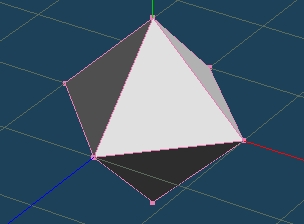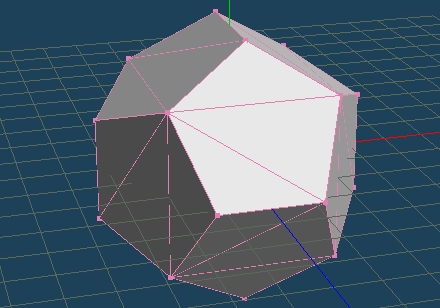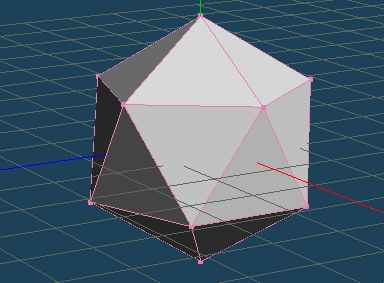正八面体をつくる メタセコ Python
- Metasequoia > Metasequoia Python
- by yuichirou yokomakura
- 2010.09.03 Friday 23:11
Metasequoia Pythonの使い方を検討する。今回は正八面体をつくってみた。面がばらばらにはなっていない。


def p(*args):
"""
プリント関数
複数の引数を渡せる。
"""
if len(args)==0:
# 改行させる
MQSystem.println("")
return
for arg in args:
MQSystem.println(str(arg))
#meta_drawocta.py
doc = MQSystem.getDocument()
out = MQSystem.println
def drawOcta():
obj = MQSystem.newObject()
s=MQSystem.newPoint
p =[s(-50,0,0), s(0,0,50), s(50,0,0),s(0,0,-50), s(0,50,0),s(0,-50,0)]
out(str(p[0]))
obj.addVertex(p[0])
obj.addVertex(p[1])
obj.addVertex(p[2])
obj.addVertex(p[3])
obj.addVertex(p[4])
obj.addVertex(p[5])
obj.addFace([4,1,0])
obj.addFace([4,2,1])
obj.addFace([4,3,2])
obj.addFace([4,0,3])
obj.addFace([1,5,0])
obj.addFace([2,5,1])
obj.addFace([3,5,2])
obj.addFace([0,5,3])
doc.addObject( obj )
import traceback
import sys
#dist=0
try:
drawOcta()
except:
info=sys.exc_info()
p(info[0])
p(info[1])
p(*traceback.extract_tb(info[2]))- -
- -

